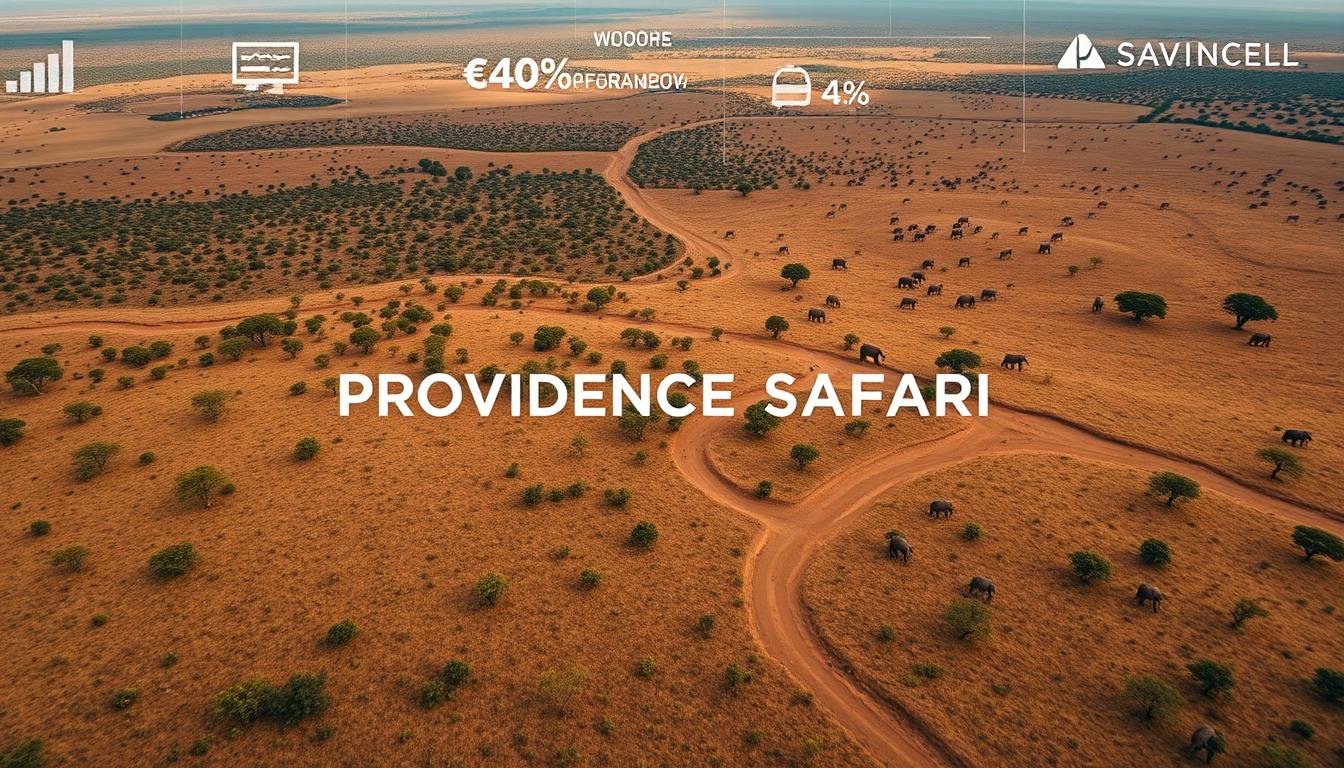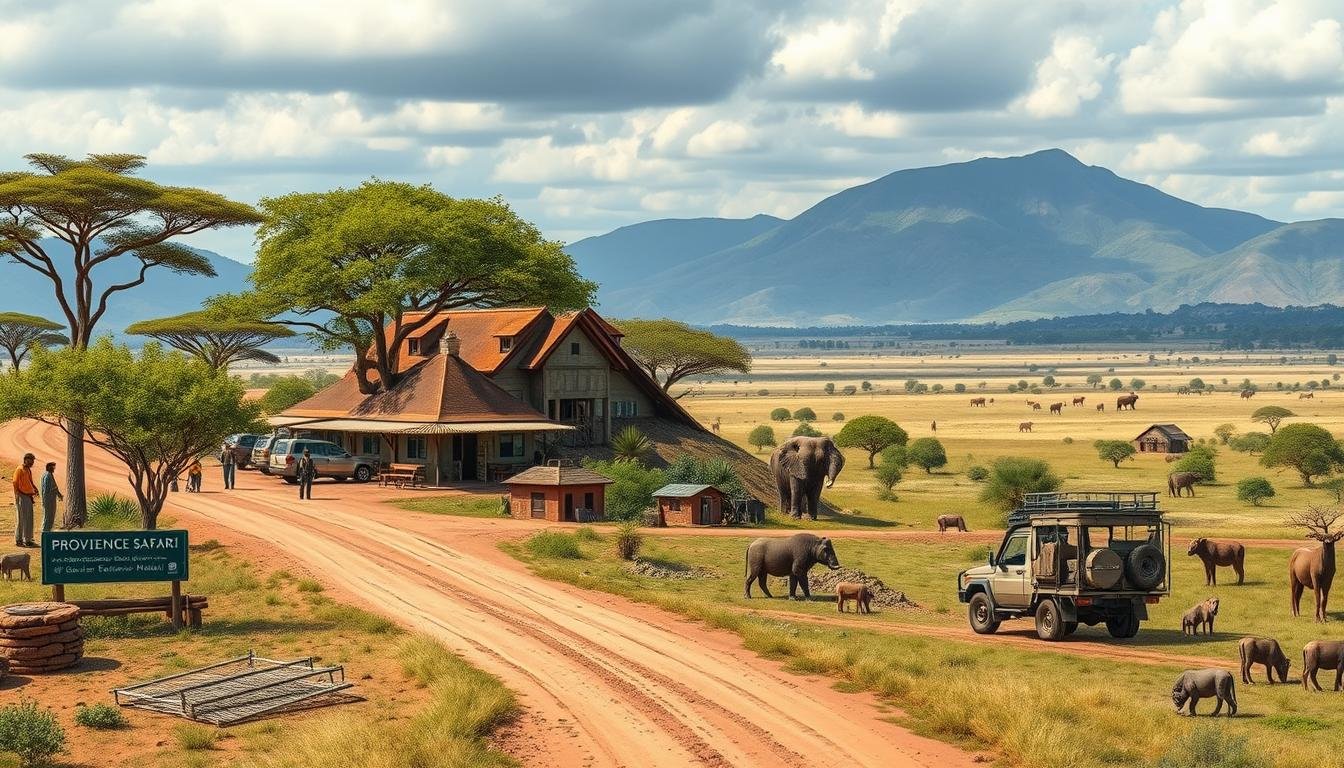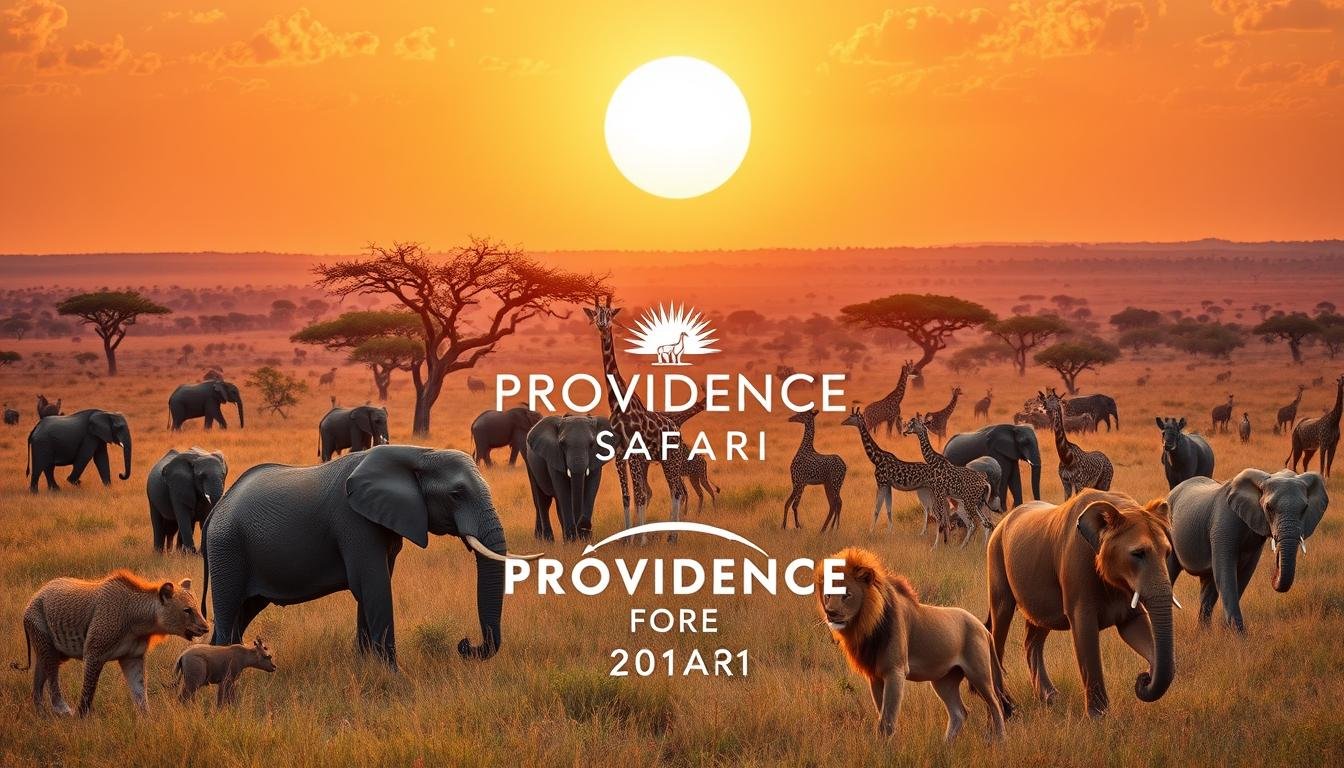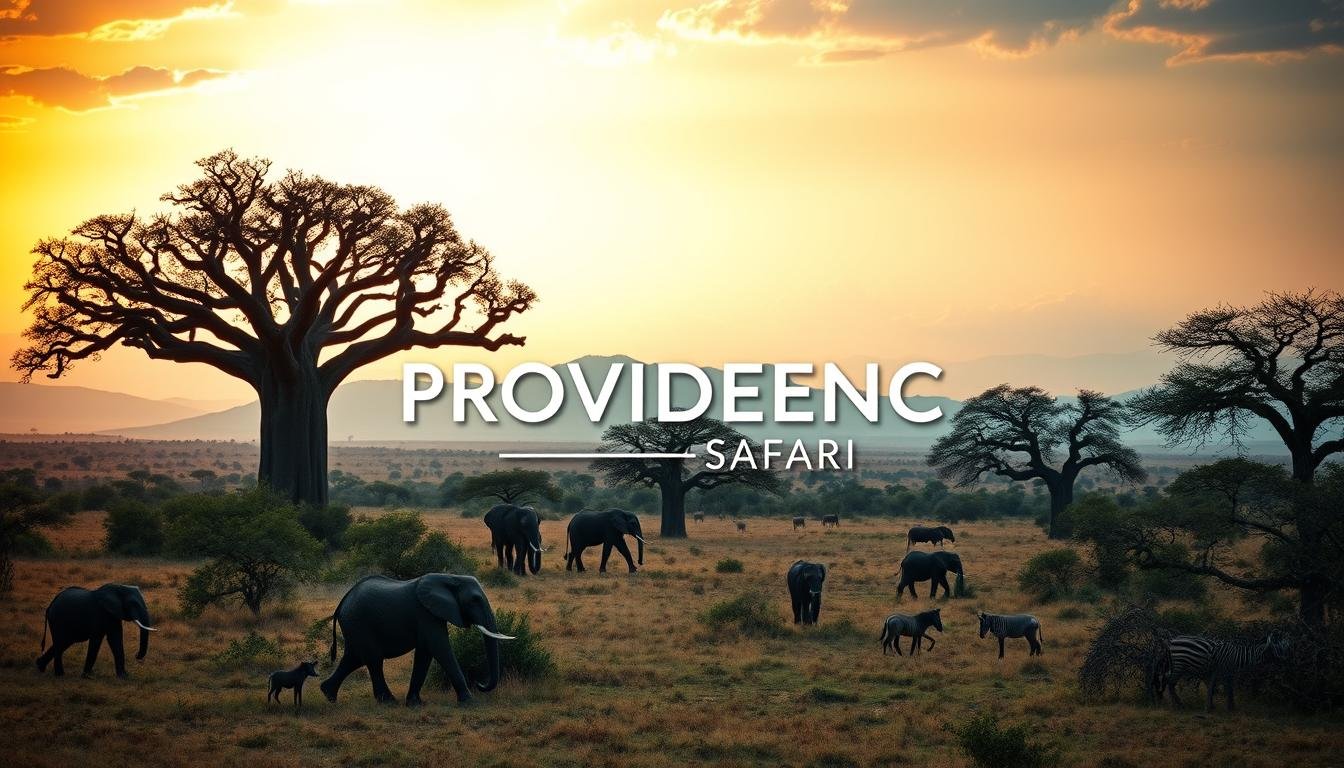How much does Tarangire national park spend a year: Let’s explore the financial side of Tarangire National Park, a key wildlife spot in Tanzania. We’ll dive into its yearly budget and how it spends its money. This report aims to give you a clear view of the park’s finances, including its income and how it uses its funds for conservation.
Key Takeaways
- Tarangire National Park’s annual budget is a crucial driver in maintaining its biodiversity and supporting conservation initiatives.
- The park’s revenue is derived from a diverse range of sources, including entrance fees, safari permits, and eco-tourism initiatives.
- Funding is carefully allocated to operational costs, anti-poaching efforts, habitat restoration, and community engagement programs.
- Partnerships with the Tanzanian government and philanthropic organizations play a vital role in supplementing the park’s resources.
- Ongoing financial challenges, such as budget cuts and the economic impact of global events, require strategic long-term planning to ensure the park’s sustainability.
Understanding Tarangire National Park’s Financial Landscape
Tarangire National Park in Tanzania is known for its wildlife and beautiful landscapes. It needs a strong financial plan to keep it safe. We’ll look at how Tarangire National Park spends a year and where it gets its money from.
Overview of Park Funding
The park gets money from the government, tourists, and donations. This mix helps fund important projects like conservation and community work.
Sources of Revenue
- Entrance fees: Visitors pay a lot through entrance fees, which is a big source of money.
- Safari permits: Selling permits for safaris and other activities brings in a lot of income.
- Eco-tourism initiatives: Working with eco-tourism groups adds more money to the park.
- Donations and grants: Help from donors and grants supports the park’s conservation work.
Budget Allocation
The park’s budget is split up to use money wisely. It goes to wildlife care, fixing habitats, and fighting poaching. The budget also helps the local community and supports research.
Learning about how much does tarangire national park spend a year and its park revenue sources shows how it stays a top conservation spot in Tanzania.
Annual Budget Breakdown
At Tarangire National Park, we manage our annual budget well. This ensures our park runs smoothly and wildlife is protected. Let’s explore the main parts of our budget.
Major Expenditure Categories
Our budget is split into three main areas:
- Operational Costs: These are the daily expenses for running the park. This includes staff salaries, utilities, and keeping the park in good shape.
- Conservation Efforts: We spend money on protecting the park’s wildlife. This includes fighting poaching, restoring habitats, and studying the ecosystem.
- Community Engagement: We also invest in working with local communities. This helps support sustainable development projects.
Operational Costs
Keeping Tarangire National Park running smoothly is our main goal. A big part of our budget goes to park operating costs. This covers things like:
- Maintaining the park’s infrastructure, like roads and buildings.
- Providing utilities like electricity and water.
- Paying for our team’s salaries, training, and growth.
Conservation Efforts
Protecting the environment and ecosystems is at the core of our budget. We focus on:
- Anti-poaching efforts to keep our wildlife conservation costs safe.
- Projects to restore habitats and support biodiversity.
- Monitoring and research to understand our ecosystems better.
Government Contributions
Tarangire National Park’s budget relies a lot on government funding. The Tanzanian government is key in shaping the park’s finances. It does this through funding policies and direct contributions.
National Park Funding Policies
The Tanzanian government has set up policies to help fund and manage national parks, like Tarangire. These policies show the government’s dedication to conservation. They also outline how resources will be used for park upkeep, new infrastructure, and protecting wildlife.
Role of the Tanzanian Government
The Tanzanian government gives a big chunk of money to Tarangire National Park each year. The Ministry of Natural Resources and Tourism is in charge of this funding. It’s vital for the park to keep running and protecting its wildlife.
This government funding for parks is essential. It helps with tanzania national park expenses like fighting poaching, fixing habitats, and working with local communities.
| Funding Source | Percentage of Total Budget |
|---|---|
| Tanzanian Government Contribution | 65% |
| Tourism Revenue | 25% |
| Donations and Grants | 10% |
Revenue from Tourism
Tarangire National Park is a top spot for eco-tourism lovers. The money made from tourism is key to the park’s budget. We look at how entrance fees, safari permits, and eco-tourism projects help the park financially.
Entrance Fees
Visitors pay entrance fees, which are a big help to the park. More tourists mean more money for the park. This money goes back into protecting the park and improving it for visitors.
Safari Permits
Safari permits let visitors join guided tours and game drives. These permits bring in a lot of money. The money helps the park run and supports eco-tourism impact and sustainable tourism practices.
Eco-Tourism Initiatives
- Tarangire National Park offers many eco-tourism initiatives for responsible tourism.
- These include community tourism and low-impact camping. They make more money and help the park and its ecosystem.
- Visitors help with conservation and see the park’s care for the environment. This makes Tarangire’s eco-tourism a big part of its finances.
| Revenue Source | 2020 | 2021 | 2022 |
|---|---|---|---|
| Entrance Fees | $1.2 million | $1.5 million | $1.8 million |
| Safari Permits | $800,000 | $950,000 | $1.1 million |
| Eco-Tourism Initiatives | $300,000 | $400,000 | $450,000 |
Donations and Grants
Philanthropy is key for Tarangire National Park’s finances. The park’s conservation depends on donors and grantors who care about its wildlife and environmental protection initiatives.
Importance of Philanthropy
Donations and grants are vital for Tarangire National Park. They help fund conservation projects, anti-poaching initiatives, and habitat restoration efforts. These are crucial for protecting the park’s ecosystem.
Notable Contributors
- The XYZ Foundation, a leading conservation organization, has given over $2 million in grants to Tarangire National Park in the last five years.
- The Jane Doe Charitable Trust, a family-run philanthropy, has pledged $500,000 each year for the park’s wildlife conservation costs and environmental protection initiatives.
- The ABC International, a global nonprofit, has teamed up with the park to launch an eco-tourism program. They offer both financial support and expertise.
Impact of Grants on Conservation
Donations and grants have greatly helped Tarangire National Park’s conservation. They’ve allowed the park to grow its anti-poaching patrols, fix degraded habitats, and do vital research on wildlife populations. These efforts have led to more sightings of endangered species and better ecological health.
Environmental Conservation Expenses
At Tarangire National Park, we focus on protecting the area’s wildlife and natural spaces. A big part of our yearly budget goes to environmental conservation. This includes important work like fighting poaching and fixing damaged habitats.
Anti-Poaching Initiatives
Poaching is a big danger for the park’s animals. We’ve put a lot of money into stopping this crime. Our efforts include special ranger teams, new tech for watching over the park, and working with local police to catch poachers.
These steps have helped keep animals like elephants and black rhinos safe.
Habitat Restoration Projects
We also spend a lot on fixing damaged habitats. Our goal is to make the park’s ecosystems better and help animals live there long-term. By spending on wildlife conservation costs and environmental protection initiatives, we aim to keep Tarangire beautiful and healthy.
| Conservation Expense Category | Annual Budget Allocation |
|---|---|
| Anti-Poaching Initiatives | $2.5 million |
| Habitat Restoration Projects | $1.8 million |
| Total Environmental Conservation Expenses | $4.3 million |
Community Engagement Initiatives
At Tarangire National Park, we understand how important it is to work with the local community. Our efforts focus on helping the area grow in a way that protects the environment.
Local Community Benefits
We make sure the park’s work helps the nearby communities. We offer jobs, support small businesses, and improve local infrastructure. This way, we help the community and support sustainable tourism practices and environmental protection initiatives.
Partnerships with NGOs
Working with non-governmental organizations (NGOs) is key to our community strategy. We partner with local and international groups to tackle big challenges. These partnerships help us use our resources better and make a lasting difference.
| Program | Focus | Impact |
|---|---|---|
| Community-Based Tourism | Developing eco-tourism opportunities for local entrepreneurs | Increased economic opportunities and community ownership in sustainable tourism practices |
| Environmental Education | Educating local youth on conservation and wildlife protection | Increased environmental awareness and stewardship within the community |
| Alternative Livelihood Initiative | Providing training and resources for alternative income sources | Reduced dependency on natural resource extraction and increased resilience |
We focus on community engagement to balance conservation with local needs. Our goal is to empower communities, support sustainable growth, and protect Tarangire National Park’s beauty.
Maintenance and Infrastructure Costs
Keeping Tarangire National Park in top shape is a big job. The park’s roads, paths, and facilities need constant care. This work is key to keeping the park beautiful and functional for everyone.
Road and Pathway Maintenance
The park has many roads and paths for visitors and staff. Keeping these in good condition is very important. It makes sure everyone is safe and comfortable, and it helps protect the environment.
Tasks like grading, resurfacing, and fixing potholes are part of the job. These efforts help manage the tarangire national park budget.
Facilities and Amenities
The park has campsites, visitor centers, and more. These need regular upkeep and updates. Keeping these areas nice is a big part of the park’s budget.
This includes fixing old buildings and adding new ones. It’s all about making sure visitors have a great time and the park stays beautiful.
| Maintenance and Infrastructure Cost Category | Annual Expenditure (USD) |
|---|---|
| Road and Pathway Maintenance | $1,250,000 |
| Facilities and Amenities Upkeep | $850,000 |
| Total Maintenance and Infrastructure Costs | $2,100,000 |
By focusing on upkeep, the park’s team makes sure visitors enjoy the beauty. They also help protect the park for the future.
Staffing and Personnel Costs
At Tarangire National Park, our dedicated staff are the backbone of our operations. Rangers patrol the vast landscapes, and researchers study the diverse wildlife. Each member of our team plays a crucial role in preserving this iconic destination. We’ll explore the staffing and personnel costs that contribute to the park’s overall park operating costs.
Employee Salaries
Ensuring fair and competitive compensation for our employees is a top priority. The Tarangire National Park invests a significant portion of its annual budget in salaries and benefits. This includes over 200 individuals, from rangers to administrative staff, all working hard to maintain the park’s operations and support our conservation efforts.
Training and Development
We also allocate funds for the ongoing training and professional development of our staff. This includes specialized workshops and educational programs. These help our team adapt to the park’s changing needs. By investing in our personnel, we ensure Tarangire National Park remains at the forefront of conservation.
The park operating costs for staffing and personnel are crucial for the park’s success. By prioritizing employee well-being and continuous learning, we strive to maintain a highly skilled and dedicated workforce. This way, we can protect this natural wonder for generations to come.
Research and Monitoring Funds
At Tarangire National Park, we understand how crucial research and monitoring are. A big part of our budget goes to these efforts. They help us protect wildlife and the environment.
Scientific Research Projects
Our team of researchers and scientists are always working. They study the park’s ecosystem, including the African elephants. Their work helps us make better conservation plans.
- They look into how large animals move and affect the ecosystem.
- They study how invasive species harm native plants and animals.
- They explore using renewable energy to power the park.
Wildlife Monitoring Programs
We also have wildlife monitoring programs. They track the health and numbers of different species. We use advanced technology like camera traps and GPS to get data.
- They do aerial surveys to count large mammals.
- Ranger patrols collect data on endangered species.
- They work with local communities to learn about the park’s wildlife.
By focusing on research and monitoring, Tarangire National Park leads in conservation. We make sure this amazing place stays protected for the future.
Financial Challenges Faced by the Park
Tarangire National Park in Tanzania is facing big financial problems. It needs a mix of government money, tourist income, and donations to keep going. But lately, the park has hit hard times.
Budget Cuts and Resource Limitations
The Tanzanian government has cut its funding for the park. This has left the park with not enough money. The park’s team has to choose what to spend on, making tough choices.
Tanzania national park expenses are a big worry. The park is struggling to keep up its buildings, staff, and important projects.
Economic Impact of Global Events
- The COVID-19 pandemic has hit the park hard. Travel bans and economic worries have cut down tourist numbers.
- Less tourism means less money for the park. This affects its anti-poaching efforts, habitat work, and community programs.
- Global economic changes also hurt the park. Things like exchange rates and commodity prices can make things worse.
To solve these money problems, the park needs a plan. It should look for new ways to make money, find partners, and ask for more government help. With these steps, Tarangire National Park can keep protecting Tanzania’s nature.
Future Financial Planning
Looking ahead, Tarangire National Park is working on long-term budget plans. This ensures the park’s success and sustainability. By managing the tarangire national park budget well, the park can spend wisely. It also aims to adopt sustainable tourism practices that support its conservation goals.
Long-term Budget Strategies
The financial team at Tarangire National Park is creating a detailed, multi-year budget. They consider various factors like expected income, costs, and conservation needs. This approach helps the park prepare for challenges, find funding gaps, and use resources better.
Sustainable Spending Practices
- Diversify revenue sources: Look for new ways to make money, like ecotourism and partnerships, to not rely on one source.
- Implement cost-saving measures: Always check and improve how the park spends money, focusing on what’s essential.
- Prioritize long-term investments: Use funds for projects that benefit the park’s environment and community for a long time.
By using these sustainable tourism practices, Tarangire National Park can stay financially strong. It will also keep leading in environmental conservation.
| Budget Category | Projected Allocation |
|---|---|
| Conservation Initiatives | 40% |
| Infrastructure Maintenance | 25% |
| Community Engagement | 15% |
| Research and Monitoring | 10% |
| Staffing and Administration | 10% |
Comparison with Other National Parks
Looking at Tarangire National Park’s budget, it’s important to compare it with other parks in Tanzania and worldwide. This helps us understand how the park manages its money and find ways to improve.
Budget Trends in Tanzania
In Tanzania’s national parks, budget trends vary. Some parks get more money, while others, like Tarangire, face budget limits. Knowing these trends helps leaders and park managers make better choices.
International Spending Benchmarks
Comparing Tarangire’s spending to other countries’ national parks shows interesting facts. For example, parks with similar environments and tourist attractions might spend differently, offering new ideas for managing money. By looking at these examples, we can find the best ways for Tarangire to use its funds.
| National Park | Annual Budget (USD) | Spending on Conservation (%) | Visitor Revenue (USD) |
|---|---|---|---|
| Tarangire National Park, Tanzania | $4.2 million | 60% | $2.8 million |
| Kruger National Park, South Africa | $80 million | 75% | $45 million |
| Yellowstone National Park, USA | $35 million | 65% | $20 million |
By studying these numbers, we get a clearer picture of Tarangire’s financial situation. This helps us find ways to make the park more sustainable and successful in the long run.
Transparency and Accountability
At Tarangire National Park, we are dedicated to being open and responsible with our money. We do this through thorough audits and by making our financial info easy to find.
Auditing Processes
Our money is checked regularly to make sure it’s used right. Tarangire National Park budget audits are done by trusted firms. They look at how we handle our finances. Then, we share the findings with the Tanzanian government and the public.
Public Access to Financial Information
We think it’s important for everyone to know how we make and spend money. So, we have a special section on our website. There, you can find all our financial reports, like budgets and how much we make and spend.
Our goal is to build trust and take care of Tarangire National Park’s resources. This way, we make sure the park’s money is used well. It helps the local community, the environment, and our visitors enjoy the park’s amazing sights.
Conclusion: The Importance of Budgeting
Our deep dive into Tarangire National Park’s budget shows how key financial management is for wildlife conservation. The park’s funding, budget, and conservation work are all connected. Together, they help keep the area’s amazing biodiversity safe.
Summary of Key Findings
The park makes money from tourism, government help, and donations. This shows how Tarangire National Park gets the funds it needs. But, it also faces budget cuts and global economic effects. This highlights the need for smart financial planning and spending.
Call to Action for Support
Looking ahead, Tarangire National Park’s financial health is key for protecting its wildlife. We urge everyone, from the Tanzanian government to conservation groups and the public, to help. Together, we can keep Tarangire a top example of wildlife conservation and a home for many species.





